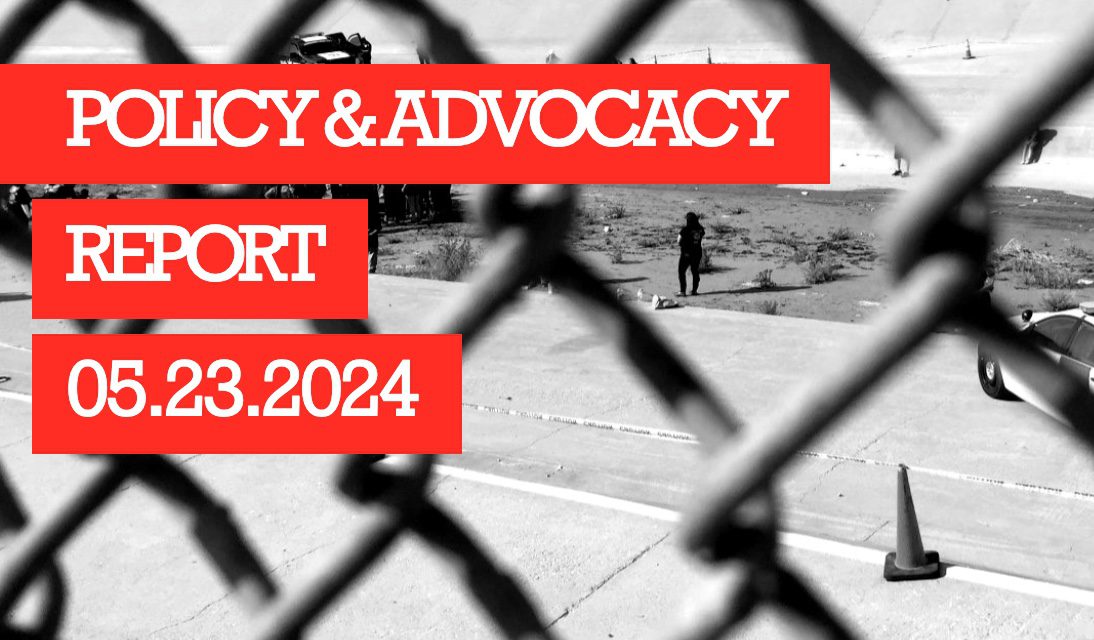
By the end of World War II, between 50-80 million people had been killed. An estimated 60 million more had been displaced, many of whom were attempting to seek refuge in other countries.
To ensure that the consequences of World War II would never repeat, the United Nations (UN) drafted the Universal Declaration of Human Rights (UDHR), adopted by the UN General Assembly in 1948. For the first time, an international agreement set forth fundamental human rights. Article 14 of the Declaration asserts that all humans have the right to seek and enjoy asylum from persecution in countries other than their own.
The UN defined the role of governments in upholding Article 14 in the 1951 Refugee Convention and the 1967 Refugee Protocol. Non-refoulement—a central responsibility of the Refugee Convention and Protocol—prevents governments from deporting asylum seekers to countries where they may face persecution.
While the United States was a signatory of the Refugee Protocol, it did not establish the legal system to protect individuals fleeing persecution until the Refugee Act of 1980, which also included the principle of non-refoulement. The Convention against Torture and Other Cruel, Inhuman or Degrading Treatment or Punishment (CAT), the William Wilberforce Trafficking Victims Protection Reauthorization Act of 2008, and the asylum and withholding provisions in 8 U.S.C. 1158 and 1231(b)(3) reiterate the principle of non-refoulement.
Ignoring History and Laws Meant to Protect Vulnerable Individuals
The United States has a history of turning away people seeking refuge at its borders, which did not end with the passage of laws meant to prevent refoulement. In the same year of the passing of the Refugee Act of 1980, large numbers of Haitians fled to the United States by boat. In 1981, the Reagan Administration pledged not to return asylum seekers, while striking a deal with Haiti’s government to facilitate the return of all Haitians apprehended at sea. Similar actions continued under the H.W. Bush and Clinton administrations, which led to the detainment of thousands of Haitians for offshore asylum processing in Guantanamo Bay.
In 1996, Congress created the expedited removal process, which has been used to remove millions of people – more than 1.3 million individuals between 2013 and 2022 alone – without offering them the chance to present their case in front of an immigration judge. The Biden administration has continued the systemic failures of previous administrations by enhancing the use of expedited removal and combining it with other restrictive policies to deter asylum seekers from arriving at the Southern border.
One Year of the Asylum Ban
The UN Refugee Agency (UNHCR) estimates that 103.8 million people—well over the 60 million number after World War II—will be displaced in 2024 due to conflict, natural disasters, and other emergencies. Instead of responding with declarations of shared humanity, governments around the globe have tightened borders to deter asylum seekers. The United States is no different.
Just over a year ago, the Biden administration published the Circumvention of Lawful Pathways rule, also known as the asylum ban, which prevents most applicants from applying for asylum if they entered through the U.S.-Mexico border or adjacent coastal areas on or after May 11, 2023. While limited exceptions exist, the scope of this ban is vast, and individuals subject to the rule face expedited removal. An individual is presumed ineligible for asylum unless they or a member of their family they are traveling with meet one of three exceptions.
In theory, asylum seekers can refute the presumption of ineligibility if they meet certain criteria. In practice, this has proven difficult for asylum seekers. Moreover, the humanitarian parole programs mentioned in the asylum ban are limited to certain nationalities and to people who can afford travel, passports, and have family in the United States with the means to sponsor them. However, the near-mandatory nature of the CBP (Customs and Border Protection) One app and the limit on the number of CBP One appointments remain the main barriers to accessing asylum.
At present, individuals must compete for one of 1,450 daily spots to present themselves at a port of entry via the CBP One app. Due to geofencing limitations, individuals fleeing persecution can only schedule appointments 21 days in advance once they reach central and northern Mexico, although the wait time is often much longer than three weeks. Staff from USCRI’s Mexico office in Tijuana have reported that wait times for CBP One appointments have increased to eight months.
According to USCRI Mexico staff, the CBP One app allocates 30 percent of appointments to individuals with the oldest pending registrations, and the remaining 70 percent of appointments are selected randomly from applicants who registered the previous day. The effect is a humanitarian system that operates as a lottery system.
Smartphones, access to the internet, and digital literacy have become lifelines for those waiting in Mexico. However, many asylum seekers do not have the luxury of technology either because they cannot afford it or because actors in Mexico have confiscated their phones. If asylum seekers can access smartphones, the devices are often older technology and do not support the app. In other cases, asylum seekers cannot pay for the data or do not have access to Wi-Fi. While CBP claimed that the facial recognition issue was fixed, there are still reports of people with darker skin tones, such as Black and Indigenous persons, having greater difficulty accessing the app. Individuals with physical disabilities, such as facial scarring or disfigurement, also report having greater difficulty. The app is inaccessible to those who cannot read English, Spanish, or Haitian Creole, in addition to those with limited digital literacy skills.
Even if asylum seekers can use and access the necessary technology, technical issues are common. USCRI Mexico staff and other organizations report that asylum seekers routinely experience glitches when accessing the app. On various occasions, USCRI reported that the CBP One app deleted accounts without providing a reason, leaving asylum seekers to restart the process or seek assistance.
While it appears that many of these issues would qualify as an exception to the asylum ban due to “a language barrier, illiteracy, significant technical failure, or other ongoing and serious obstacle,” it remains to be seen how this is implemented in practice. Some organizations have reported that CBP officers have asked asylum seekers who faced difficulties accessing the app why they did not use someone else’s phone or ask someone who was literate, understood technology, or spoke one of the three languages for help. Requiring individuals to seek outside help can lead to further risk.
USCRI Mexico staff reported that fraud against asylum seekers has increased due to the CBP One app. They report that individuals pretending to be lawyers in the United States charge asylum seekers to guarantee a CBP One appointment. Fraud puts already vulnerable individuals at greater risk of exploitation, human trafficking, and violence. Human Rights First has tracked over 2,500 reports of kidnappings and violent attacks on asylum seekers in Mexico since the asylum ban was implemented.
The risk of refoulement from the asylum ban is high. And delayed entry does not protect against refoulement.
Continued Barrage on Asylum
On May 13, 2024, the U.S. Department of Homeland Security (DHS) published a Notice of Proposed Rulemaking (NPRM) entitled Application of Certain Mandatory Bars in Fear Screenings. If finalized, the rule would allow Asylum Officers to apply certain bars to asylum eligibility earlier in the application process, specifically during initial fear screenings. Congress originally intended initial fear screenings to act as a lower standard for admission into the full asylum process. Currently, the bars are only considered once an asylum seeker presents their case in front of an immigration judge. However, the NPRM would make the initial screenings harder for certain individuals to overcome, preventing them from ever receiving a full hearing in immigration court.
The Administration simultaneously announced revised guidance to Asylum Officers to require that asylum seekers demonstrate that the threat of persecution would remain even if they relocated within the country of feared persecution. If unable to show that the threat would remain, the asylum seeker would be deported to a different part of the country where they feared persecution. However, this is in direct contrast to the principle of non-refoulement, which states that countries should not deport asylum seekers to countries—not regions of countries—where they may face persecution.
On the same day, the Administration also published policy guidance on the use of classified information in fear screenings. The new guidance removes necessary safeguards and allows immigration adjudicators to use classified information against people in immigration proceedings. The use of classified information will create a less transparent asylum process and likely result in asylum seekers not knowing the reason for denials.
Recommendation
The Biden administration must uphold the principle of non-refoulement. This principle is in the international instruments to which the United States is a signatory, and it is embedded in our immigration laws. To uphold the principle, the Administration must make significant changes to the recently published notice Application of Certain Mandatory Bars in Fear Screenings. And it needs to rescind guidance, such as the recent policy that incentivizes Asylum Officers to internally relocate asylum seekers within countries of feared persecution. USCRI will be providing comments on the recent notice and continuing to advocate for the right to seek asylum from persecution.












